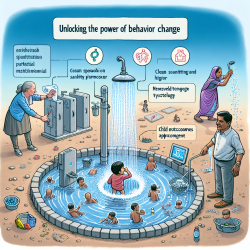Introduction
In the realm of speech-language pathology, understanding the underlying mechanisms of various disorders can significantly enhance therapeutic outcomes. A recent review titled Reward circuitry dysfunction in psychiatric and neurodevelopmental disorders and genetic syndromes: animal models and clinical findings sheds light on the common neurobiological deficits across different disorders. This article explores how these insights can be applied to improve therapy outcomes for children.
The Role of Reward Circuitry
Reward circuitry dysfunction is a common thread in a variety of psychiatric and neurodevelopmental disorders, including autism spectrum disorders (ASD), attention-deficit/hyperactivity disorder (ADHD), and genetic syndromes like Fragile X syndrome. The mesolimbic dopamine system, particularly the nucleus accumbens, plays a pivotal role in processing rewards, motivation, and goal-directed behaviors. Dysfunction in this system can lead to deficits in motivation and reward processing, impacting learning and behavior in children.
Implications for Therapy
For practitioners, understanding the nuances of reward circuitry dysfunction can inform more targeted interventions. Here are some strategies:
- Incorporate Reward-Based Interventions: Tailor therapy sessions to include activities that activate the reward system. This could involve using preferred activities or stimuli as rewards to motivate children and reinforce desired behaviors.
- Monitor Reward Responsiveness: Regularly assess how children respond to rewards. This can provide insights into the effectiveness of interventions and help in adjusting strategies to better suit individual needs.
- Collaborate with Multidisciplinary Teams: Work with psychologists and neurologists to gain a comprehensive understanding of a child's neurological profile, which can guide the development of personalized therapy plans.
Encouraging Further Research
The review highlights the need for more research into the specific pathways and mechanisms of reward circuitry dysfunction. Practitioners are encouraged to stay informed about the latest findings and consider participating in research studies that explore innovative therapeutic approaches.
Conclusion
Understanding reward circuitry dysfunction offers a promising avenue for enhancing therapeutic outcomes in children with various disorders. By integrating these insights into practice, speech-language pathologists can contribute to more effective and personalized interventions.
To read the original research paper, please follow this link: Reward circuitry dysfunction in psychiatric and neurodevelopmental disorders and genetic syndromes: animal models and clinical findings.










